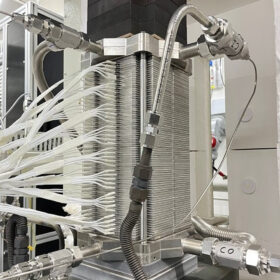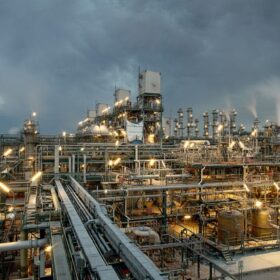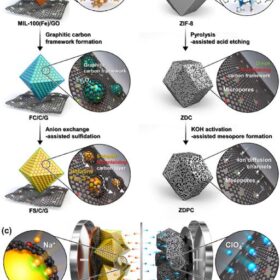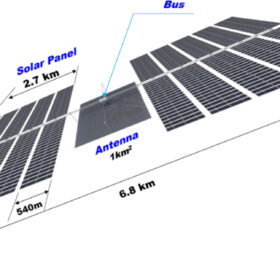Korean researchers build 8 kW solid oxide electrolysis cell that can produce 5.7 kg of hydrogen per day
The Korea Institute of Energy Research has developed a solid oxide electrolysis cell stack that uses a special kind of separator plate to ensure proper flow of hydrogen and oxigen after water splitting. Samsung Electro-Mechanics and Bumhan Industries are now cooperating with the research center to improve relevant manufacturing process.
OCI increases production capacity at Malaysian polysilicon factory
OCI has revealed plans to invest $617.9 million to expand production at its Malaysian manufacturing facility from 35,000 to 56,600 metric tons.
Sodium-ion battery could charge in several seconds
Researchers at the Korea Advanced Institute of Science and Technology (KAIST) have identified a high-energy, high-power hybrid sodium-ion battery capable of charging in just a few seconds. The system integrates anode materials typically used in batteries with cathodes suitable for supercapacitors.
South Korea offers support for agrivoltaics
The South Korean government has announced a new package of measures to support agrivoltaic projects. It says that the agrivoltaics business should be a priority for agricultural companies.
South Korea plans 120 GW space solar project
Two Korean research institutes are designing the 2.2 km × 2.7 km Korean Space Solar Power Satellite project with the aim of providing approximately 1 TWh of electricity to the Earth per year. The proposed system should use 4,000 sub-solar arrays of 10 m × 270 m, made out of thin film roll-out, with a system power efficiency of 13.5%.
Daikin debuts residential air-to-air heat pump
The Japanese manufacturer claims the new product has a seasonal energy efficiency ratio of up to 9.47 and a seasonal coefficient of performance of up to 5.20.
Perovskite solar cell engineered with crown ethers achieves 21.7% efficiency
Researchers utilized crown ether B18C6 and interfacial passivation at the perovskite-hole transport material interface to address lead leakage, improve power conversion efficiency and the cell’s ability to withstand humidity.
Perovskite quantum dot solar cell achieves record-breaking efficiency of 12.70%
Conceived by South Korean scientists, the cell was built with an electron transport layer made of tin oxide via a low-temperature process. The device reportedly achieved the highest power conversion efficiency ever reported for flexible quantum dot solar cells.
LG presents residential air-to-water heat pump
The system uses difluoromethane (R32) as the refrigerant and has reportedly a seasonal coefficient of performance of up to 4.69.
Hybridizing thermoelectric generators with photovoltaic ground-source heat pumps
Researchers in South Korea have analyzed the feasibility of using thermoelectric generators in combination with residential solar-assisted ground-source heat pumps and have found that the thermoelectric devices may act as a suitable power source for data loggers and other sensors in a building system.










